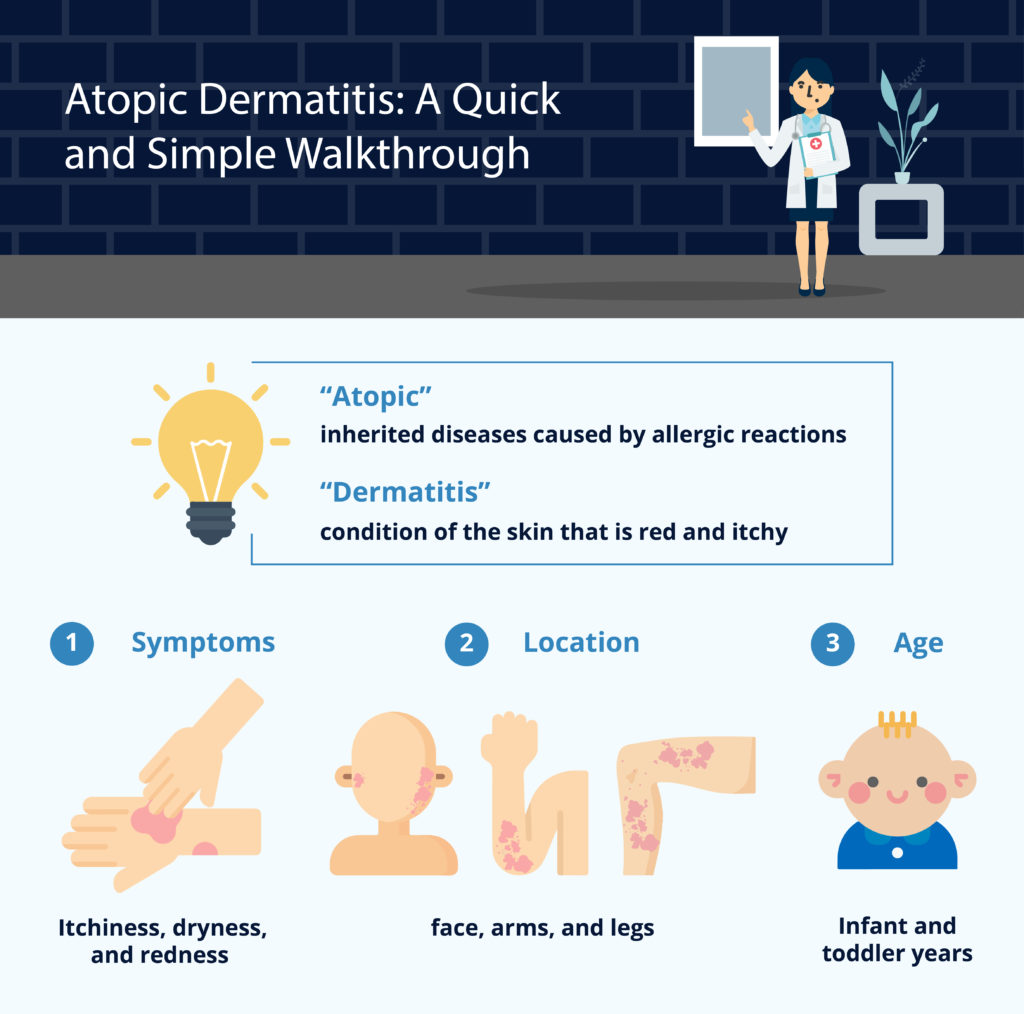
Most people are not familiar with scientific terms, especially when it comes to medical conditions. When they speak to a doctor, they just explain what they feel and the changes they notice but do not necessarily know what to call it. A perfect example is atopic dermatitis. Some might not be familiar with this skin condition or may have heard it but did not put much attention just because it sounds too scientific.
What is atopic dermatitis?
Atopic dermatitis, or commonly abbreviated as AD, is a chronic skin condition that makes your skin dry and itchy. The word “atopic” relates to inherited diseases caused by allergic reactions, and the word “dermatitis” simply refers to a condition of the skin that is red and itchy. Categorized as an atopic disease, it is under the same classification as hay fever and asthma. Though it is more common in children, it can occur at any age. It is a long-lasting skin condition that flares-up from time to time.
What are the symptoms?
The primary symptoms are itchiness, dryness, and redness. These can appear as early as infant and toddler years. Other symptoms may differ depending on the age. These include small bumps and thickening of the skin, cracks, and scales, swelling and irritation, and infection. The symptoms can come and go throughout your lifetime. This is what is called a flare-up or when a certain trigger causes the symptoms to appear.
On what part of the body does it usually appear?
The most common locations of this skin disease are on the face, arms, and legs. Specifically, they appear on the cheeks, neck, creases on the elbows and knees, wrists, and on the ankles. Of course, since it is a skin condition, it can happen anywhere on the body.
What might be the cause of having atopic dermatitis?
The main cause of this skin condition is genetic. It is believed to have something to do with a genetic makeup that causes the skin barrier to be compromised. That is the reason why it appears at an early age. If there is no genetic history within the family, the cause might be allergic in nature. Allergies may come from various external sources such as pollution, environmental allergens, weather, chemical irritants, and food.
Is there a cure for atopic dermatitis?
Up until now, there is still no known cure to completely eradicate atopic dermatitis. The only thing to do is find a particular medication that can work well with your skin which needs the expertise of a dermatologist to properly prescribe. There are also a lot of proven home remedies and alternative herbal medicines that can provide relief to a specific symptom. Sometimes, a skincare regimen and lifestyle change can help. You can check the NALA blog to read more about these things and find tips.
When should I see a doctor?
You must go directly to your dermatologist if you experience any of the following:
- Your skin condition causes discomfort or already affects sleep and daily activities
- The affected area looks infected with pus, scabbing, and irritation
- The affected area is painful and swollen
- There is an accompanying fever
- There is no relief despite applying medications and trying home remedies
Final Thoughts
After learning about atopic dermatitis and there are still things that bother you about this skin condition, do not hesitate to talk to your doctor. You can also browse the NALA website and sign up to get the latest updates about the app that will surely help you in your journey to a happy skin.

